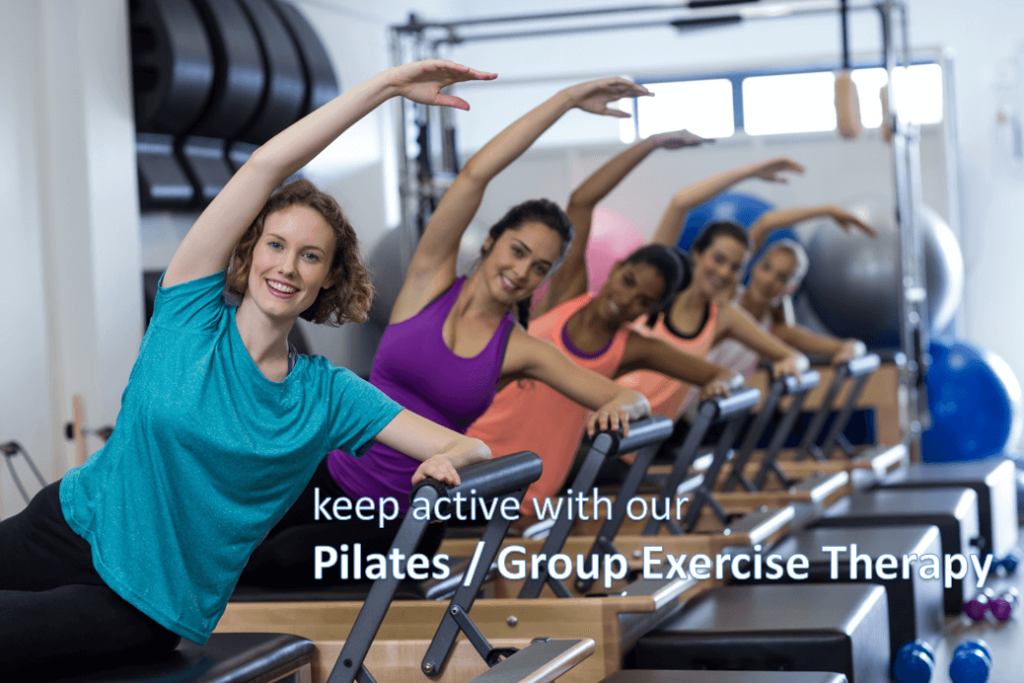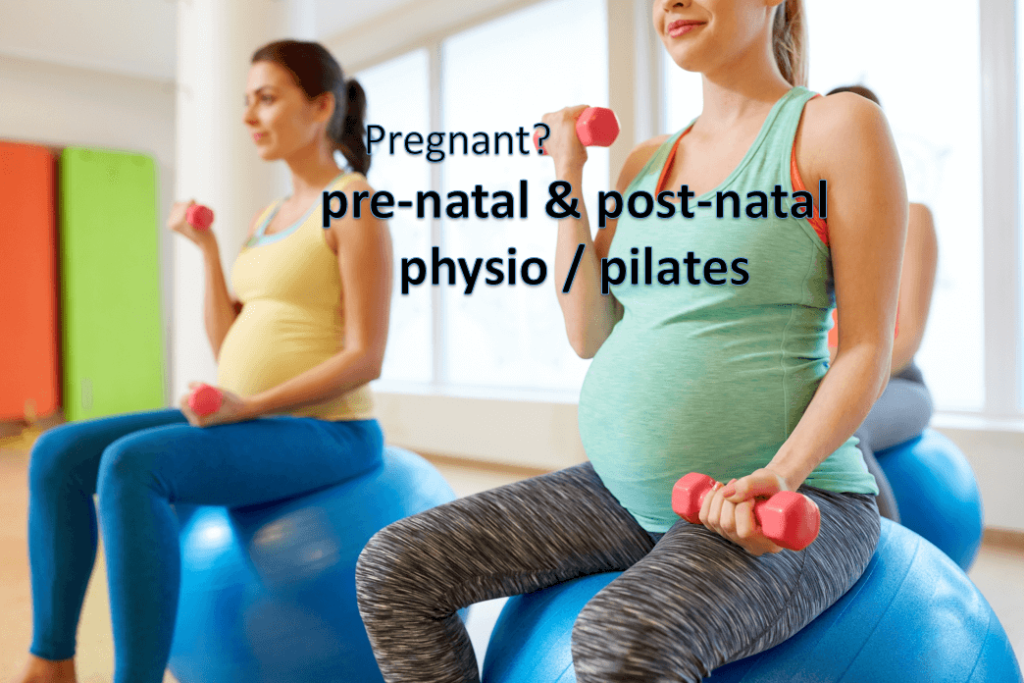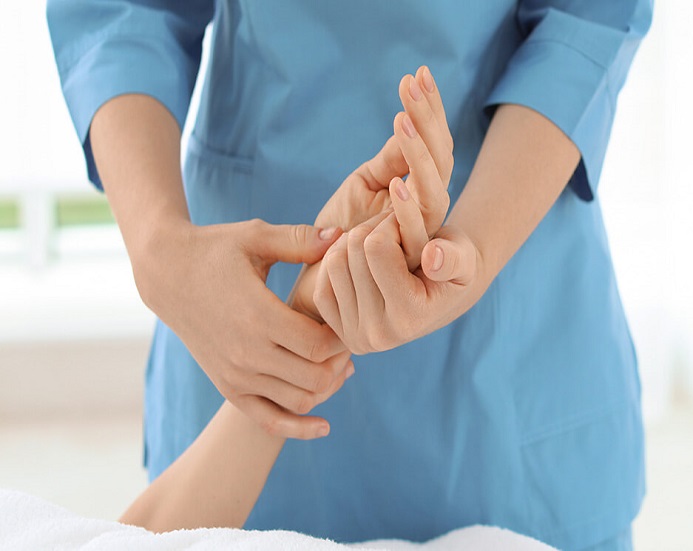Pilates isn’t just for fitness fanatics. It’s actually an accessible and great way to build strength in your core muscles for better posture, balance and flexibility. If you’re considering a Pilates class or want to know more about Pilates, here’s a guide with everything you need to know!
What kind of workout is Pilates?
Pilates (or the Pilates method) is a series of about 500 exercises inspired by callisthenics, yoga and ballet, it aims to lengthen and stretch all the major muscle groups in the body in a balanced fashion.
Pilates is low-impact and uses its exercises to strengthen muscles while improving postural alignment and flexibility. Pilates exercises tend to target the core, although the exercises work in other areas of your body as well.
Pilates classes can be beneficial for people recovering from injury or that need assistance to improve:
- Strength
- Balance
- Coordination
- Conditioning
- Fitness
Pilates classes are also beneficial for pre-natal and post-natal women’s health and many Physiotherapist or specialist Pilates studios will also conduct specialised sessions for people over 60/70 with group exercise classes tailored to specific goals and needs.
Types of Pilates
Mat Pilates
Mat Pilates is done on the floor using an exercise or yoga mat, encouraging controlled breathing whilst working through bodyweight resisted movements to build core strength. It can also involve basic Pilates equipment such as:
- A Pilates ring
- Resistance band
- Weighted balls
- Light dumbbells
Contemporary Pilates
Contemporary Pilates is influenced by modern movement & physiotherapy rehabilitation techniques. There is a large focus on understanding anatomy & the scientific reasons behind each movement & exercise. You’ll often find physiotherapy or fitness inspired exercises added into the workout too.
Classical Pilates
Classical Pilates closely follows the original Pilates system exactly the way it was taught by its founder, Joseph Pilates, in the 1920s. It always follows a precise set of exercises in an order that must always be followed. Exercises can slightly be modified if you’re unable to perform them but the general flow & sequence is usually the same.
Clinical Pilates
Clinical Pilates is a system of safe and effective exercises which meet the specific individual’s needs. It is often used in combination with physical therapy to help you recover from injuries or to manage a serious physical condition.
Dynamic Reformer Pilates
Unlike Classical Pilates, Dynamic Pilates goes a step further. It’s a more intense and dynamic program, designed to improve posture and build lean and toned muscles by targeting each muscle group through a series of a combination of slow and fast-paced movements both on and off the Reformer.
Where did Pilates come from?
Pilates was developed in Germany by a carpenter and gymnast named Joseph Pilates. He invented Pilates as an exercise program for injured dancers and soldiers while living in the UK. Joseph Pilates believed that physical and mental health were closely connected. In the 1920’s he immigrated to the US and opened a Pilates studio in New York. Since then, Pilates has been adapted to suit people in the general community.
What does Pilates do for your body?
Pilates requires focused and controlled movement, making it perfect for switching off and tuning in with what’s really going on in your body and in your mind.
Many of the exercises target the smaller, harder to reach, muscles and muscle groups so it’s important to establish a mind to muscle connection and draw attention to the breath. With so much to concentrate on it’s easy to remove stressful thoughts and just enjoy taking time out of your day for movement.
Without creating bulk, Pilates will increase muscle strength and tone. It will help increase the deep core muscles. It also improves your flexibility, balance and posture, which can decrease the chances of injuring yourself.
Major benefits of Pilates
- Preventing and managing spinal injuries
- Improving core stability
- Building muscle strength
- Improving mobility
- Improving flexibility
- Improving muscle tone
- Improving body awareness
- Improving balance
- Improving coordination
- Managing arthritis of hips and knees
- Helping encourage good posture, sports performance and injury recovery
- Helping prevention of osteoporosis
- Conditioning the body, which helps prevent injury
- Stimulating the mind and improving mood
- Improve mental concentration
- Improve pelvic stability during pregnancy
Is Pilates a good way to lose weight?
Pilates is a popular low-impact exercise. It’s effective for toning up, building lean muscle, and improving posture. Practising Pilates is also beneficial for your overall health and can help you maintain a healthy weight.
Yet, Pilates may not be as effective for weight loss as other cardio exercises, such as running or swimming. That’s because you’ll burn fewer calories in traditional mat Pilates classes than if you did other cardio exercises.
If you enjoy Pilates and weight loss is your goal, you may find that you are more likely to stick to your fitness routine by taking classes regularly. You’ll also be more likely to maintain a healthy lifestyle and prevent injury. If your goal is weight loss, try combining Pilates with a healthy diet and other forms of exercise. Alternate Pilates with strength training, other forms of cardio exercise and focus on eating a healthy diet with lean protein, whole grains, fruits, and vegetables.
How is Pilates different from Yoga?
Yoga – Yoga is an ancient Indian philosophy that dates back thousands of years. It was designed as a path to spiritual enlightenment, but in modern times, the physical aspects of Hatha yoga have found huge popularity as a gentle form of exercise and stress management. There are many different varieties of yoga, but each one essentially relies on structured poses (asanas) practiced with breath awareness.

The exercises of yoga are designed to put pressure on the glandular systems of your body, increasing your body’s efficiency and total health. Breathing techniques increase breath control to improve the health and function of body and mind.
The two systems of exercise and breathing prepare the body and mind for meditation, with an approach to a quiet mind that allows silence and healing from everyday stress. When practiced regularly, yoga can become a powerful and sophisticated discipline for achieving physical, mental and emotional well-being.
The overall difference Pilates vs Yoga
Overall, the biggest difference between Pilates and yoga is the ultimate goal.
Yoga provides a meditative environment for you to improve your overall quality of life. It focuses on stress relief while improving your body.
Pilates works from the centre of your body outward. It forces you to increase your body awareness and work from your core, resulting in a stronger body.
Yoga and Pilates each have their merits. The best part is that you really don’t have to choose. Combine Pilates with yoga for an amazing way to transform your daily routine.
Things to consider before taking a Pilates classes
Although Pilates is a low-impact form of exercise, certain people should seek medical advice before embarking on a new program, including:
- People who have recently had surgery
- Pregnant women
- People aged 40 years or more
- People with a pre-existing medical condition such as heart disease
- People with pre-existing musculoskeletal injuries or disorders
- Anyone who has not exercised for a long time
- People who are very overweight or obese

Generally, a physiotherapist will request an initial 1 on 1 assessment before you begin any classes.
Pilates for Physiotherapy
Many rehabilitation clinics and wellness centres now offer Pilates as a form of physical therapy. Research has found that Pilates can be an effective treatment for injuries and illnesses such as:
- Chronic neck and back pain
- Hip or knee replacements
- Multiple sclerosis
- Fibromyalgia
- Scoliosis
It is also excellent for athletes, dancers and other sports professionals who have had some kind of injury and need rehabilitation to get back into top form. Because Pilates is a low-impact exercise, it can be tailored to work on certain areas of your body as long as you have a trained and qualified instructor.
Physio Elements offer Group Clinical Pilates and Exercise Therapy classes in a well-equipped purpose-built studio attached to our health and wellness clinic. We provide our valuable clients in and around the Kilsyth community with an effective and professional Pilates exercise therapy program. Our highly qualified Physios work passionately to ensure the best care and outcomes, providing services to a population spanning out to more than 15 kms radius that includes:
- Kilsyth
- Montrose
- Mt Evelyn
- Mooroolbark
- Croydon
- Bayswater
- Bayswater North
- Ringwood
- Ringwood East
- Heathmont
- Lilydale
- Boronia
- Silvan
- Seville
- Wandin
- Mt Dandenong
- Olinda
- Chirnside Park
To learn more about our Pilates classes including class timetables and fee structure, click here. Alternatively, you can contact us on 9729 7777 or email us at physioelementsandpilates@gmail.com.

